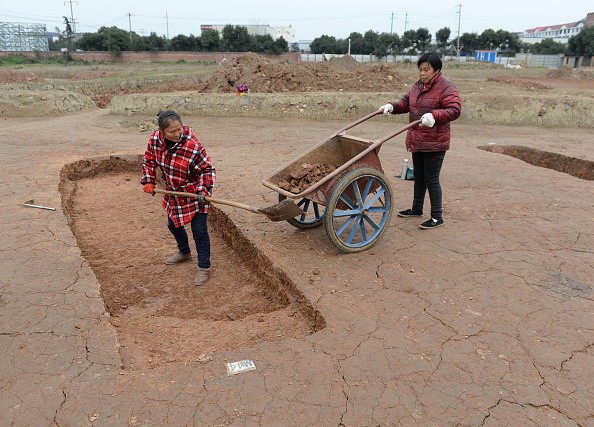Nearly 200 boat-shaped coffins in China were discovered by archaeologists in Chengdu, Sichuan Province. The coffins can be traced back from the Spring and Autumn Period (770 B.C.-476 B.C.) and the Warring States Period (475 B.C.-221 B.C.).
Archaeologists found the boat-shaped coffins after digging an area in Shuangyuan village in Dawang town, Qingbaijiang district of Chengdu. The site covers an area equivalent to the size of two football fields.
The largest coffin was found at the center of the area, buried more than 2 meters below the ground. A tree was carved and was sealed with mud to make the coffin.
According to Wang Tianyou, an archaeologist of the Chengdu Cultural Relic Archaeology and Research Institute, a large amount of bronze was discovered inside the coffins. Among these were cicadas, tigers and dragons.
Sixty boat-shaped coffins were unearthed by archaeologists September last year. Mid-January of the current year, another batch consisting 47 coffins was discovered. Sixty more coffins were found in February as the archaeologists explored the relic-rich area in Pujiang County in Chengdu.
Back in 2000, a lot of boat-shaped coffins were discovered in the commercial street in downtown Chengdu by archaeologists from the institute.
It is believed that the kings of Shu from the Warring States Period owned the coffins. Shu was Sichuan’s ancient name.
Boat-shaped coffins were very popular in Sichuan during the Spring and Autumn Period and the Warring States Period, said Zhu Zhangyi, an archaeologist and deputy chief of the Jinsha Site Museum in Chengdu.
Archaeologists from all over the globe are amazed at the current discovery of precious cultural relics in China. The relics provide people with a glimpse of the past civilization, bringing a deeper appreciation of their cultural heritage.
With the discovery of boat-shaped coffins in China, people are left wondering what other treasures lie beneath Chinese soils.



























